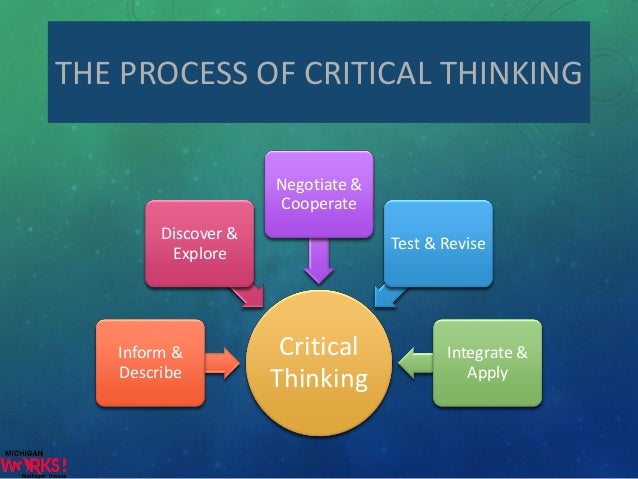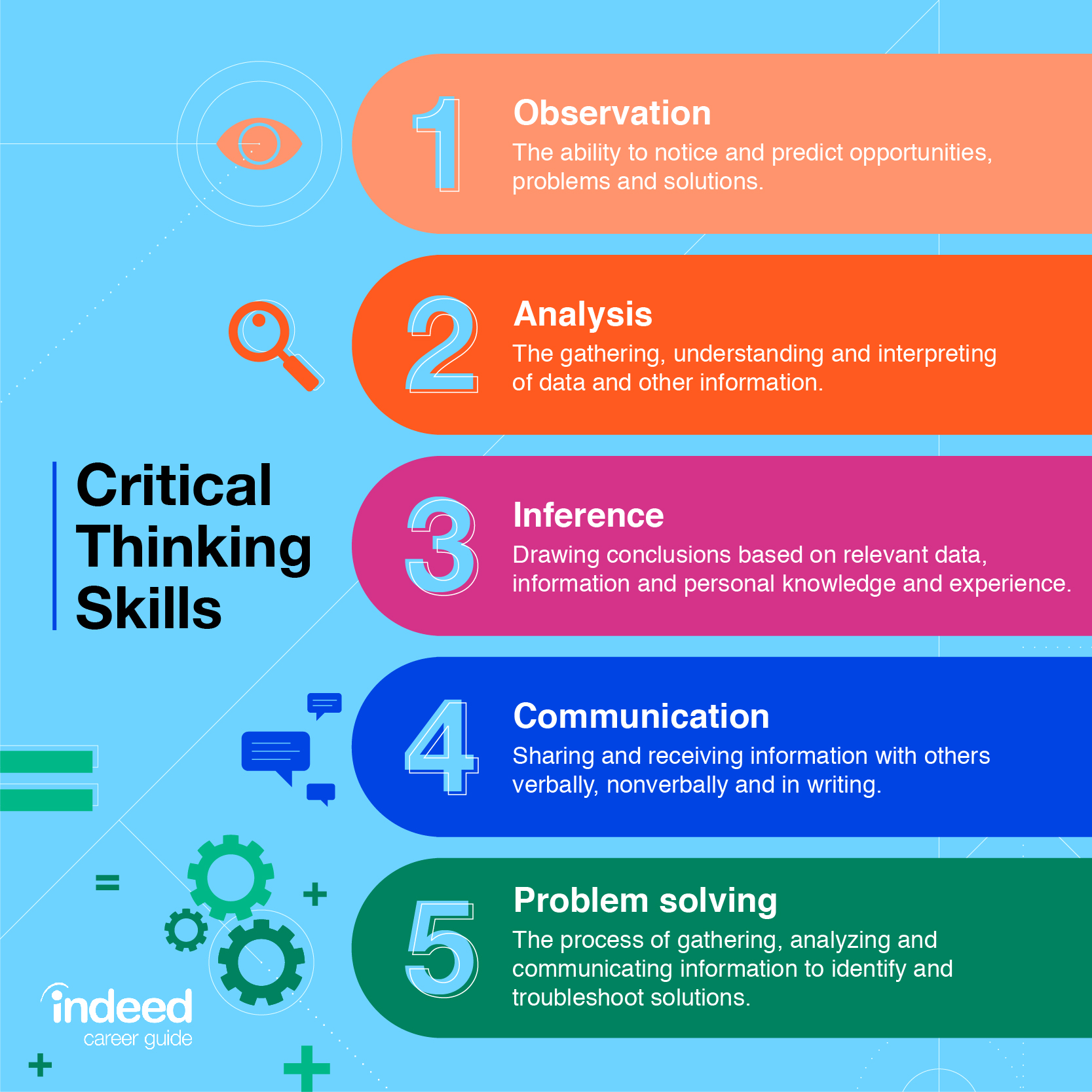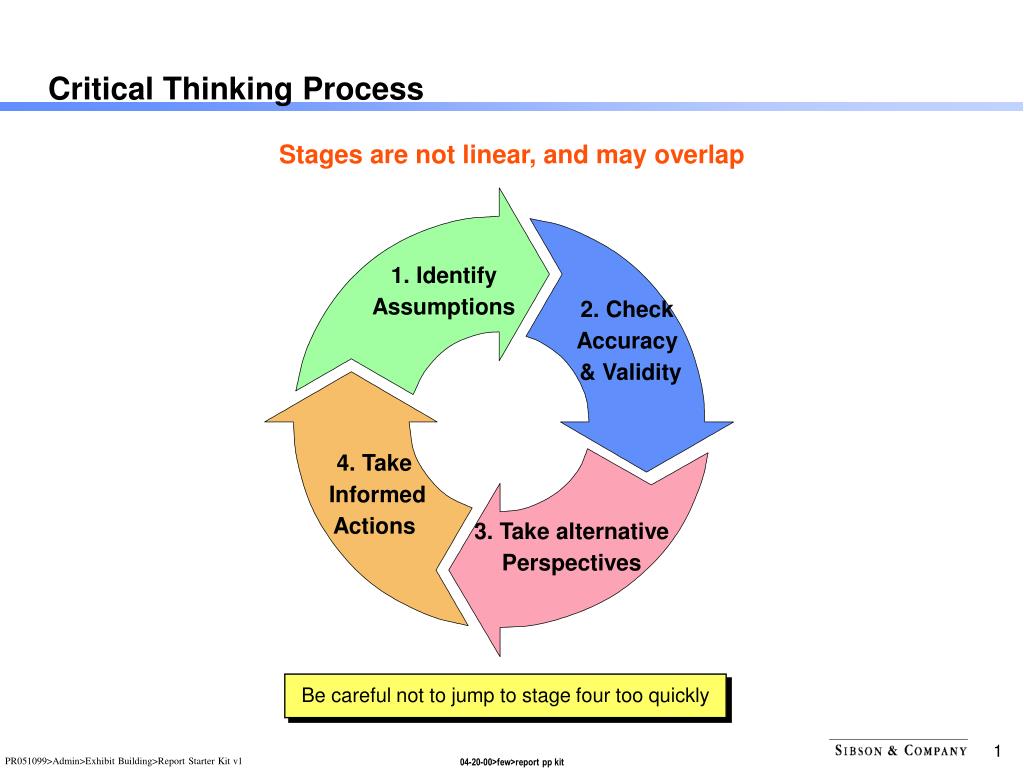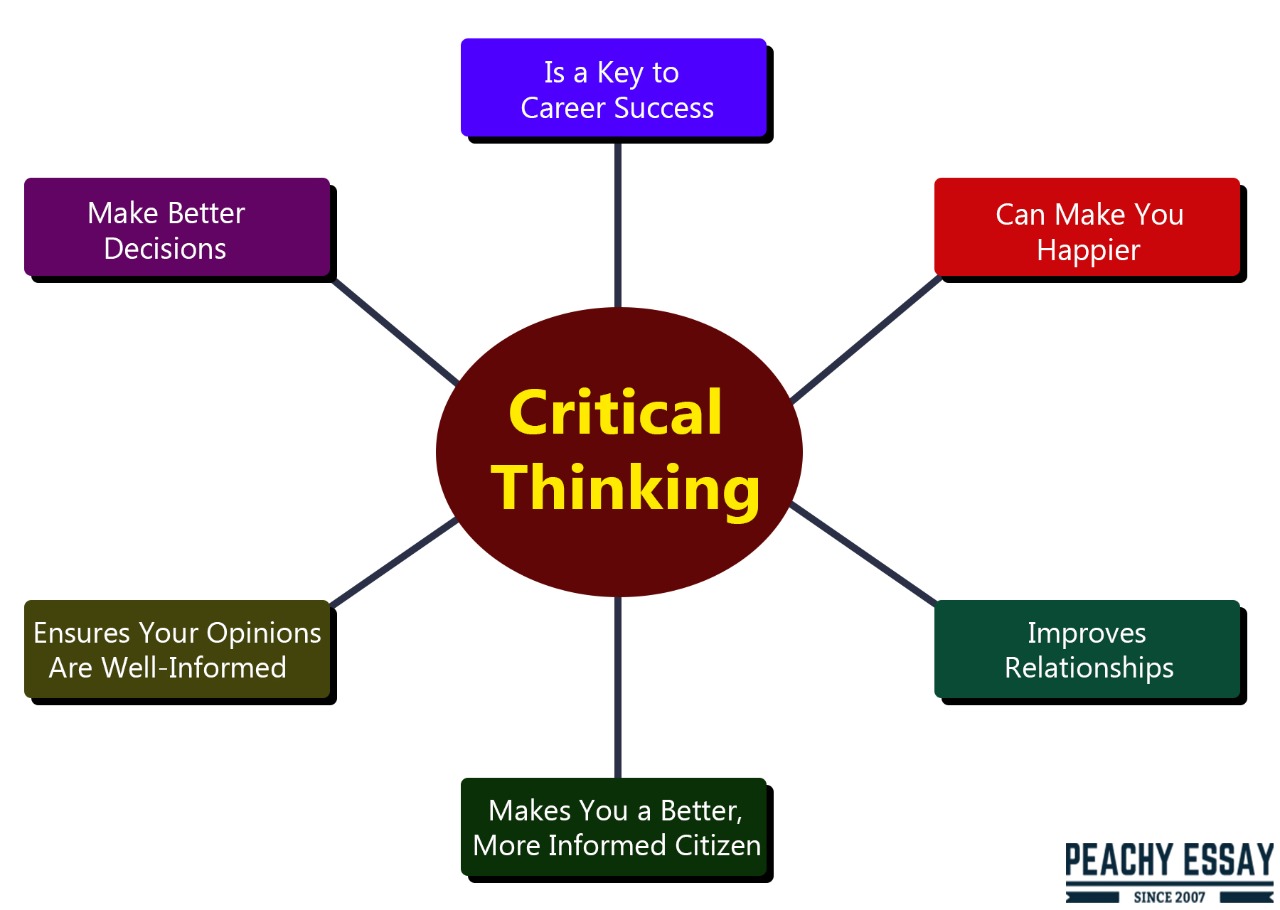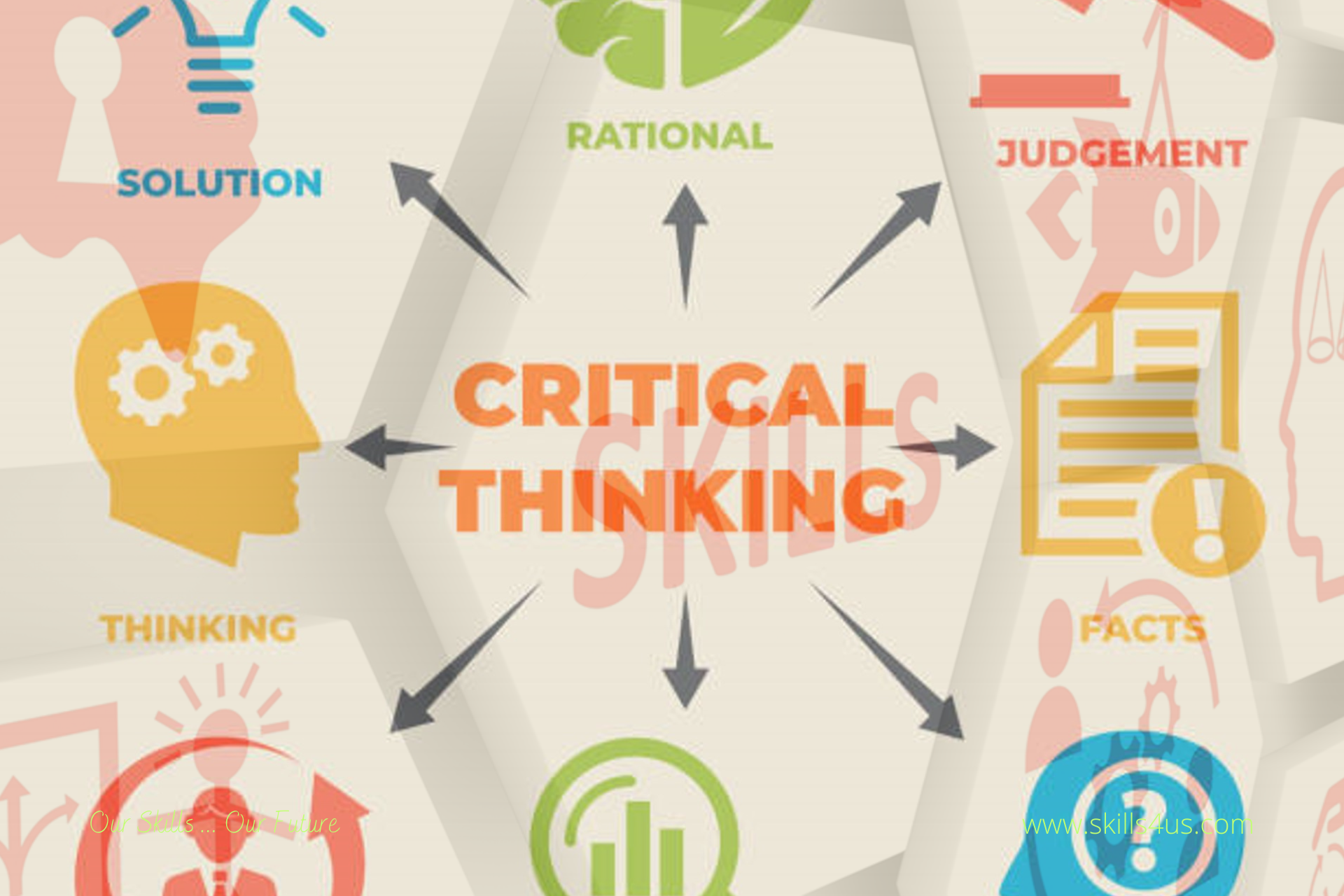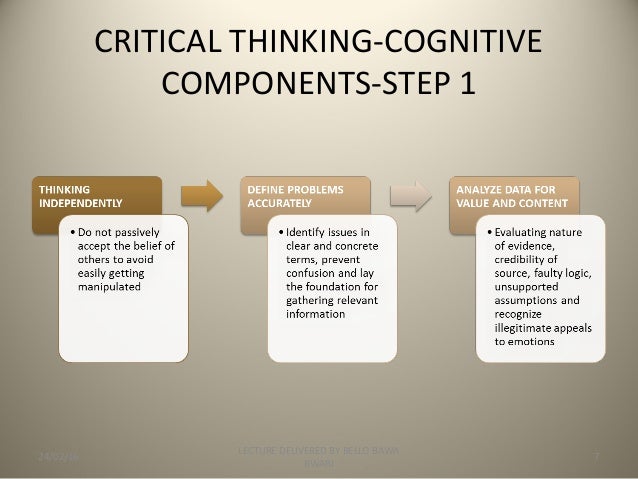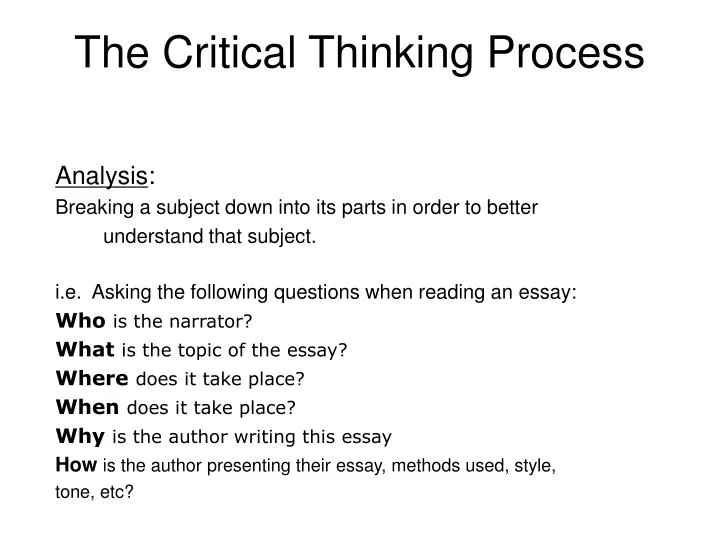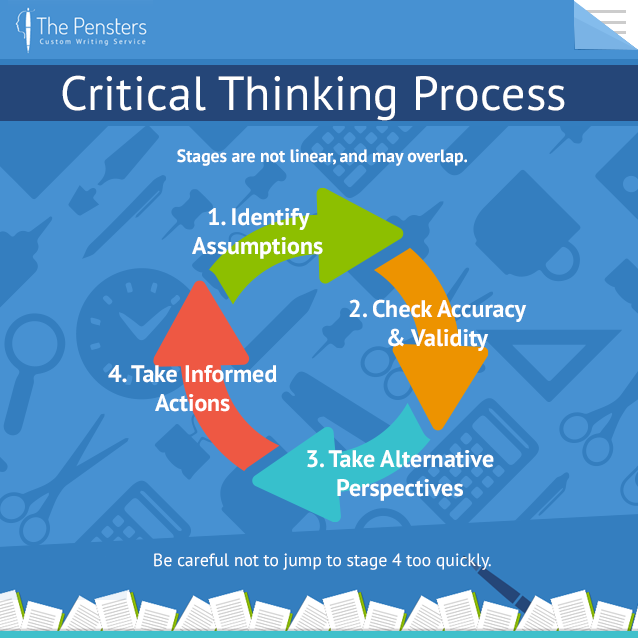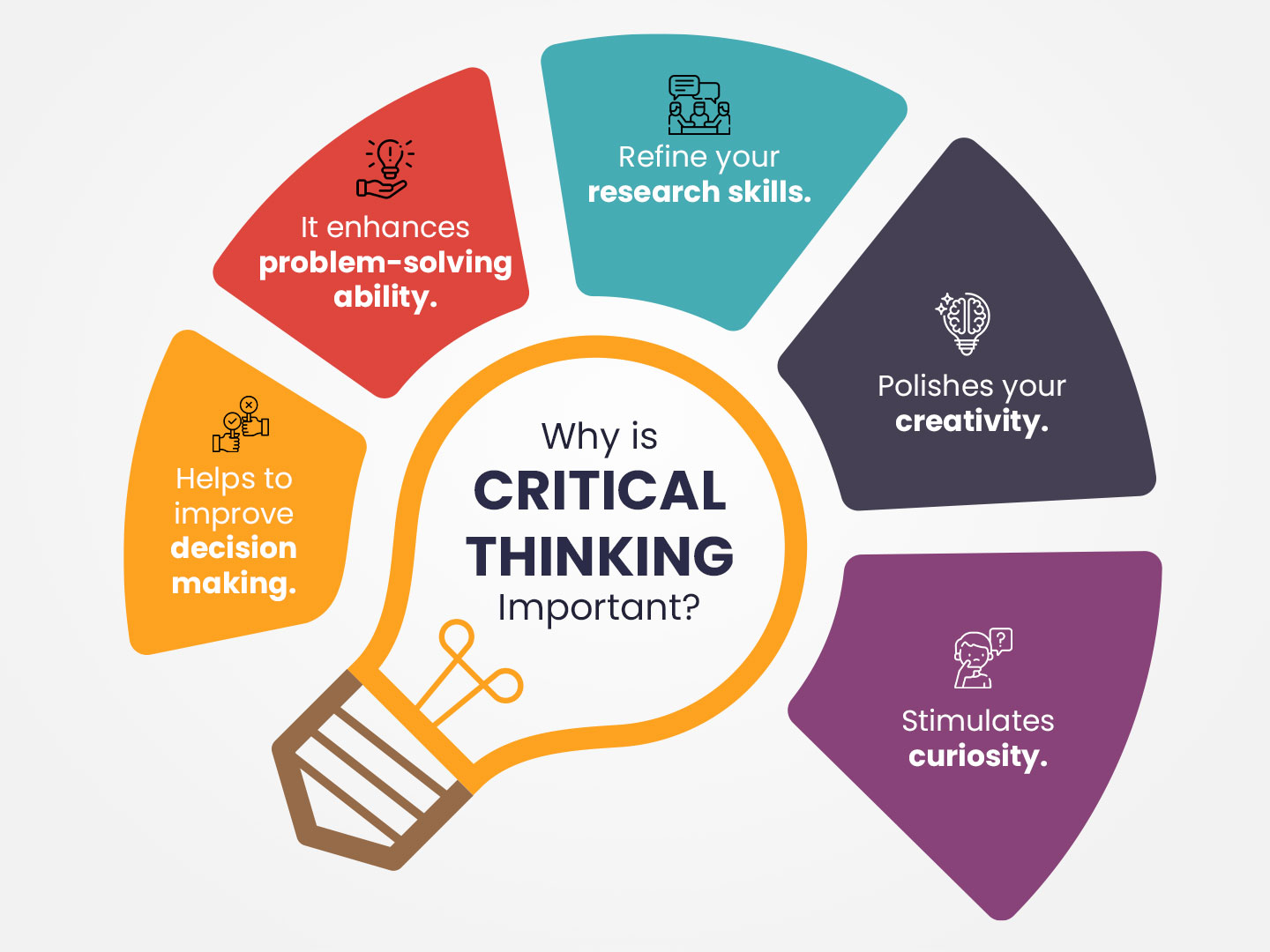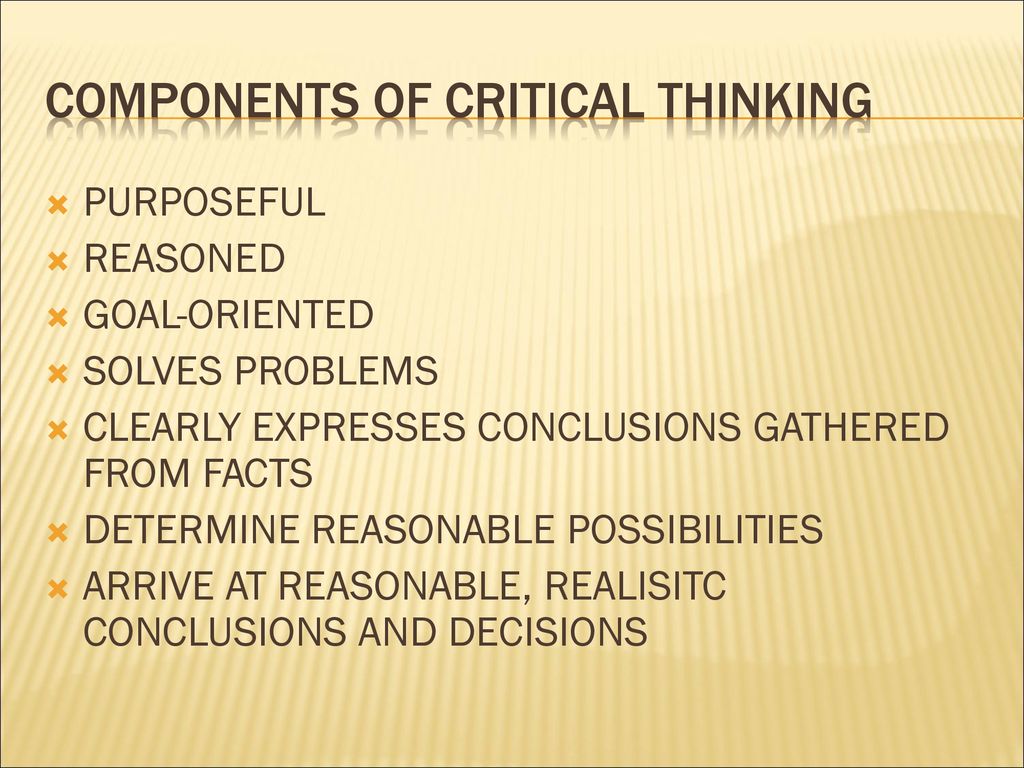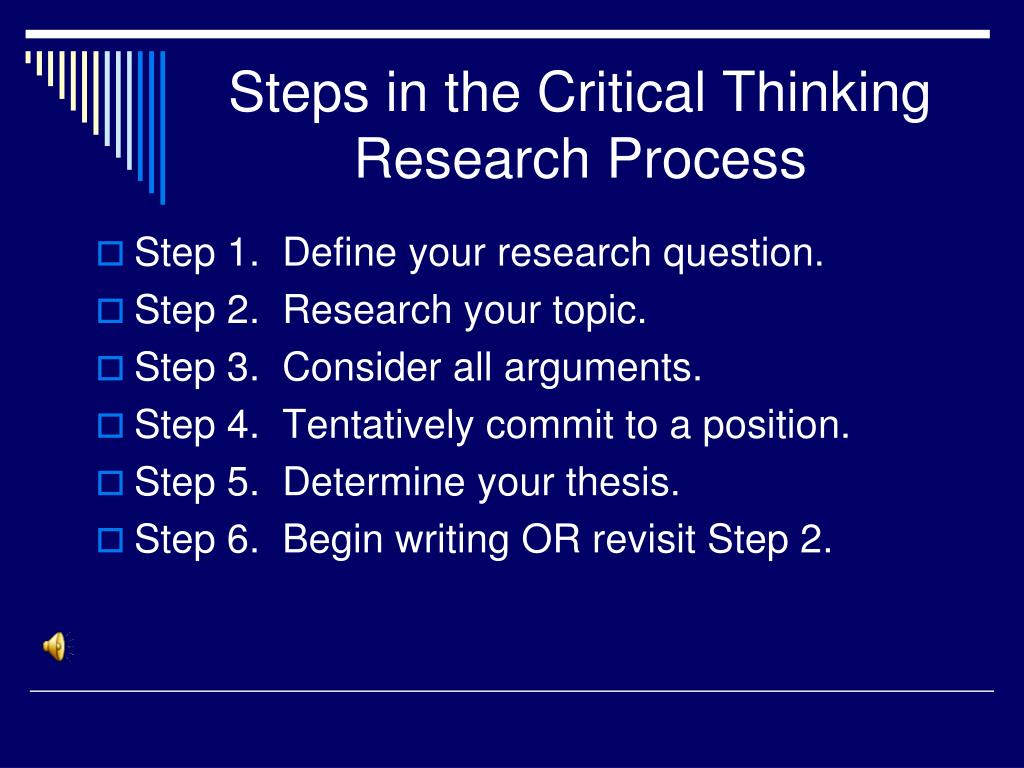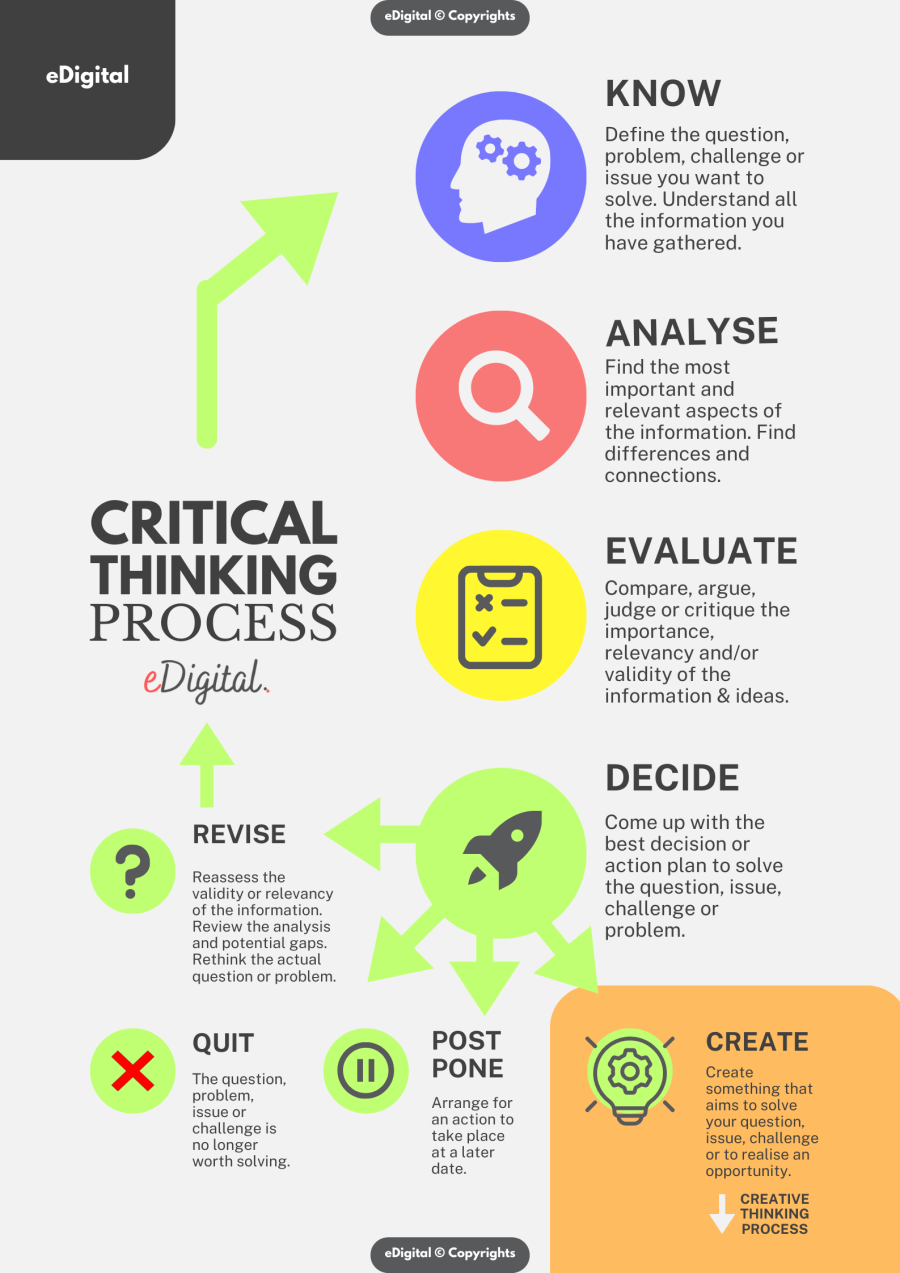How Does One Start The Critical Thinking Process
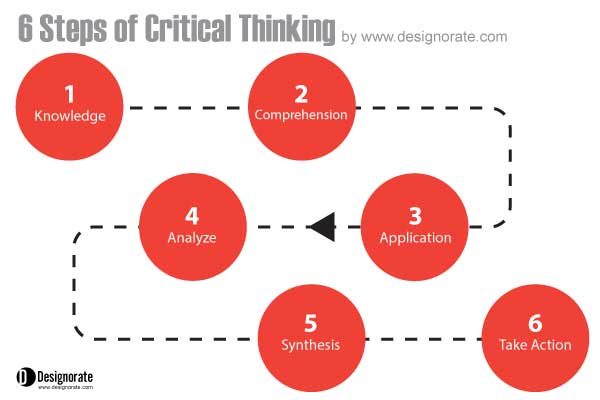
In an era defined by information overload and the constant barrage of opinions, the ability to think critically has become not just advantageous, but essential. Separating fact from fiction, identifying biases, and forming well-reasoned judgments are skills crucial for navigating the complexities of modern life.
But how does one actually *begin* to cultivate this crucial skill? Where does the process of critical thinking start?
The Foundation: Curiosity and Questioning
At its core, critical thinking begins with an inquisitive mind. It's about fostering a deep-seated curiosity and a willingness to challenge assumptions, even your own.
The starting point is always asking questions: "Why is this presented this way?" "What evidence supports this claim?" "What are the potential alternative interpretations?"
This active engagement with information, rather than passive acceptance, is the seed from which critical thought grows.
Recognizing Assumptions and Biases
A critical thinker must first identify their own assumptions and biases. We all have them, shaped by our experiences, upbringing, and social circles.
Becoming aware of these biases is the first step in mitigating their influence on our judgment. Ask yourself, "What preconceptions might I be bringing to this situation?" and "How could those preconceptions be affecting my interpretation of the evidence?"
This is not about eradicating bias – an impossible task – but about recognizing and accounting for it.
Gathering and Evaluating Information
Once you've identified your initial questions and acknowledged potential biases, the next step is to gather information. This involves seeking out diverse sources and perspectives to gain a comprehensive understanding of the issue at hand.
However, simply collecting information is not enough. The critical thinker must also evaluate the credibility and reliability of each source.
Is the source biased? Is it based on solid evidence? Are there any conflicts of interest? Always consider the source.
Analyzing Arguments and Identifying Fallacies
Critical thinking involves dissecting arguments and identifying logical fallacies. Recognizing common fallacies, such as ad hominem attacks or straw man arguments, is crucial for evaluating the validity of claims.
Understanding the structure of an argument – the premises, the conclusion, and the reasoning that connects them – allows you to assess its soundness.
Look for flaws in the reasoning, gaps in the evidence, and unsupported assumptions.
Developing a Balanced Perspective
True critical thinking goes beyond simply identifying flaws in arguments. It involves developing a balanced perspective, considering multiple viewpoints, and acknowledging the complexities of the issue.
This requires empathy and a willingness to understand perspectives that differ from your own. Engaging in constructive dialogue with others can help broaden your understanding and identify potential blind spots in your own thinking.
Remember, most issues are not black and white; there are often shades of gray and valid arguments to be made on both sides.
The Role of Metacognition
Metacognition, or thinking about thinking, is a crucial component of the critical thinking process. It involves reflecting on your own cognitive processes, identifying your strengths and weaknesses, and adjusting your thinking strategies accordingly.
Ask yourself questions such as: "What assumptions am I making?" "What evidence am I overlooking?" and "How could I approach this problem differently?"
Regular self-reflection can help you identify areas where you can improve your critical thinking skills.
Cultivating a Growth Mindset
Finally, developing a growth mindset is essential for fostering critical thinking skills. This involves embracing challenges, viewing failures as opportunities for learning, and believing that your intellectual abilities can be developed through effort and perseverance.
Embrace the iterative nature of critical thinking. Be open to changing your mind in light of new evidence and be willing to acknowledge when you are wrong.
Continuous learning and self-improvement are at the heart of critical thinking.
In conclusion, starting the critical thinking process isn't about possessing innate intelligence; it's about adopting a mindset of curiosity, skepticism, and open-mindedness. By actively questioning assumptions, evaluating evidence, and considering multiple perspectives, anyone can begin to hone their critical thinking skills and navigate the complexities of the world with greater clarity and confidence.
Moving forward, educational institutions and workplaces should prioritize the teaching and development of critical thinking skills. This will equip individuals with the tools they need to succeed in an increasingly complex and rapidly changing world. The future belongs to those who can think critically.
